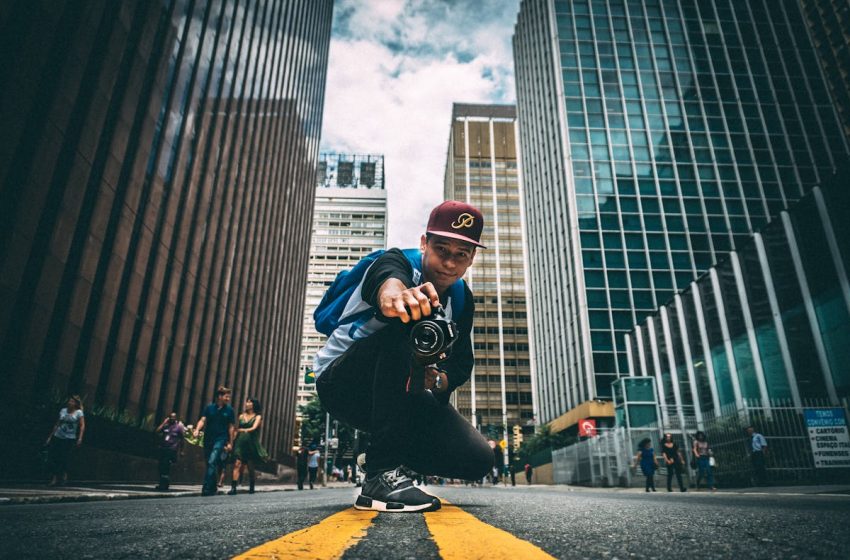Street Photography: How to Capture the Soul of a City

Every city has a rhythm—a living, breathing pulse made up of people, movement, architecture, and fleeting moments. Street photography is the art of capturing that essence. It goes beyond beautiful buildings or colorful markets; it’s about documenting life as it unfolds in public spaces. From the hustle of commuters to quiet alleyway conversations, street photography reveals a city’s unique story in raw, unfiltered detail. For photographers who love spontaneity and real emotion, the streets offer an endless canvas of inspiration. But how do you move from random snapshots to capturing the true soul of a city?
Understand the Culture and Energy
Before even lifting your camera, take time to immerse yourself in the city. Walk around without shooting—just observe. What makes the city tick? Is it the bustling markets, the street performers, or the way people gather at cafés? Each location has its own tempo and character. Understanding this allows you to anticipate moments and choose scenes that truly reflect its personality. Great street photographers are storytellers, and every good story starts with listening.
Use Light and Shadow to Create Drama
Natural light can transform an ordinary street scene into something extraordinary. In street photography, light and shadow become part of your composition. Early morning and late afternoon (golden hour) are great times to shoot because of the warm, soft lighting. But don’t shy away from harsh midday shadows—they can add drama and contrast. Look for pockets of light between buildings, reflections in windows, and silhouettes created by the angle of the sun. The way a city plays with light can say just as much as its architecture or people.
Get Closer, But Stay Respectful
Some of the most powerful street photographs are those taken up close—where you can see the subject’s expression, texture, and emotion. Don’t be afraid to get close, but always be respectful. Learn to read body language and know when it’s appropriate to shoot and when to walk away. If someone notices you and seems uncomfortable, a friendly nod or a simple smile can help ease the tension. In some cases, asking for permission can lead to even more meaningful photos and interactions.
Embrace the Imperfection
Street photography isn’t about flawless composition or perfect lighting. It’s about capturing real life, which is often messy, unpredictable, and beautifully imperfect. Motion blur, grain, and unconventional angles can add energy to your image. Don’t delete a photo just because it doesn’t follow the rules—sometimes those are the ones that capture the most truth. The beauty of the street lies in its chaos, and your job is to find art within it.
Anticipate the Moment
Unlike posed photography, street photography relies heavily on timing. Learn to anticipate what’s about to happen, not just react. Watch how people move, how traffic flows, or how birds scatter when someone approaches. The more you shoot, the more your instincts develop. Some photographers even return to the same location at different times to wait for that perfect, serendipitous moment when all the elements align.
Use the Environment as a Frame
A great way to elevate your street shots is to use elements of the environment to frame your subject. Doorways, windows, archways, and even crowds can serve as natural frames that draw the viewer’s attention to a particular focal point. Framing adds depth and context, subtly guiding the viewer’s eye and making your images more dynamic. The environment isn’t just a backdrop—it’s part of the story.
Blend into the Scene
To capture authentic street moments, it helps to be invisible. Dress low-key, avoid flashy gear, and move with confidence. The more inconspicuous you are, the more naturally people will behave around you. If you’re constantly fiddling with your settings or drawing attention, you’ll lose the spontaneity that makes street photography so powerful. Some professionals even use silent shutters or compact cameras to remain discreet.
Gear Doesn’t Matter As Much As Vision
You don’t need a high-end DSLR to be a great street photographer. In fact, many of the most iconic street shots were taken on simple rangefinders or even smartphones. What matters most is your ability to see the moment and tell the story. A small, lightweight camera can be less intimidating and easier to carry around all day. Whatever you use, make sure you’re comfortable with it—it should feel like an extension of your hand.
Find Unique Characters and Details
While big cityscapes are visually striking, don’t forget to focus on the small details that bring personality to a place. Look for the guy selling flowers every morning on the same corner, the graffiti that changes weekly, or the barista who knows everyone by name. These unique touches give your photos depth and intimacy. Even during events or celebrations where a photo booth rental is set up for guests, the candid moments happening outside the booth often tell a deeper story than the posed shots themselves.
Conclusion
Street photography is an ongoing dance between observation and intuition. It’s about capturing not just what a city looks like, but what it feels like to be there. From quiet corners to chaotic intersections, the goal is to freeze honest moments that reflect the heart of a place. Whether you’re documenting everyday life or photographing energy around a photo booth rental atlanta, every image should say something true. With curiosity, patience, and an open mind, your camera becomes a tool for storytelling—and the streets, your endless source of inspiration.